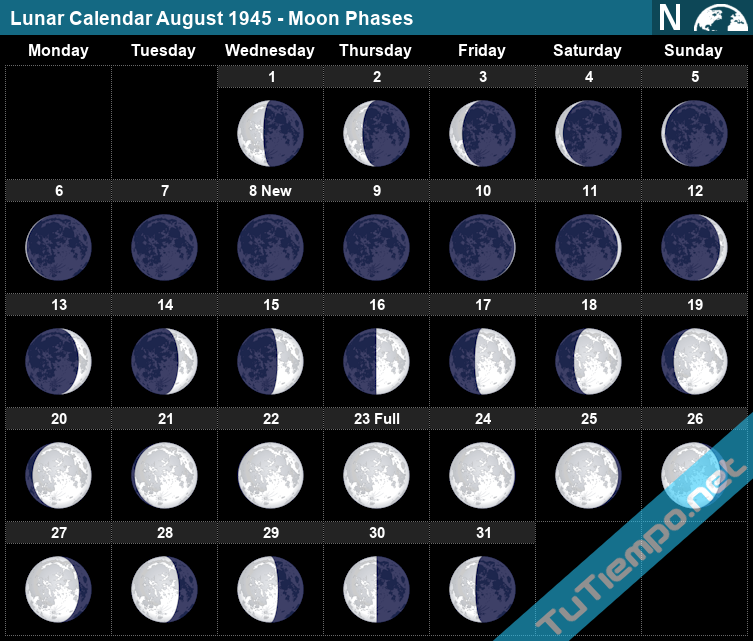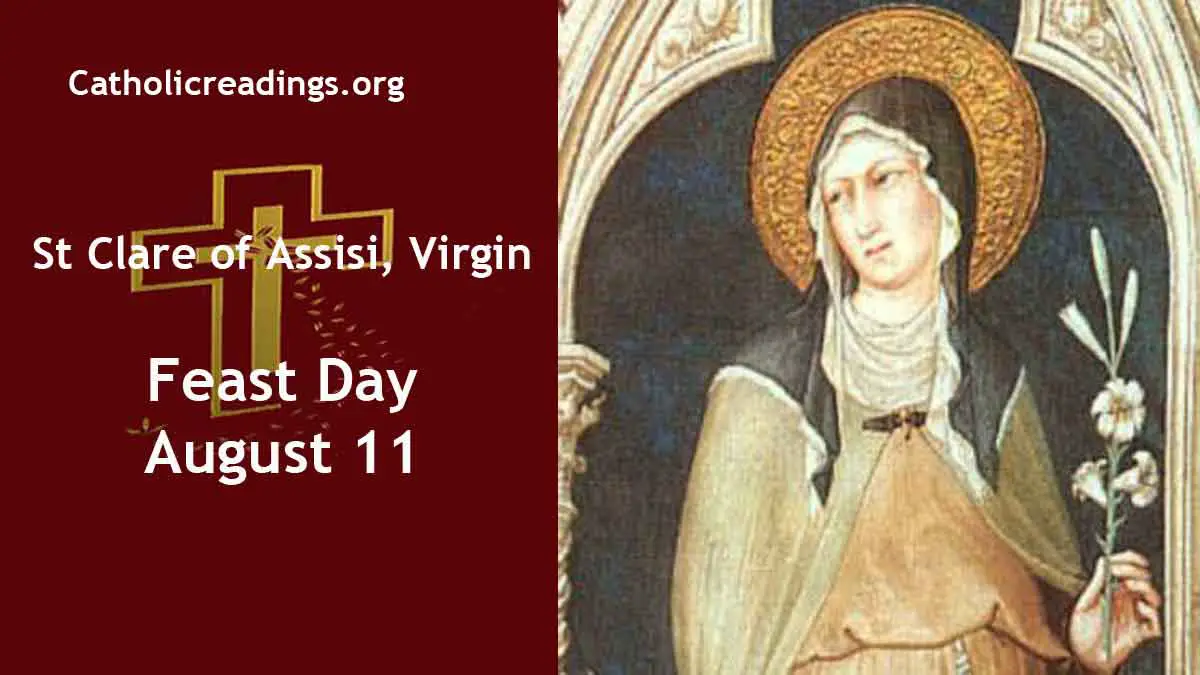|
|
HD photographs of Saint Bernard statue on Eglise de la Madeleine in Paris - Page 1029
We were in the 8th Arrondissement of Paris at the Eglise de la Madeleine, when we took these high definition photos showing a statue depicting Saint Bernard, which was sculpted by Honore Husson.
Paris Statues
- << Previous 1021 1022 1023 1024 1025 1026 1027 1028 1029 1030 Next >>
This first HD photo shows one of thirty-four different saints that are located on the facades of the Madeleine Church, with this one depicting Saint Bernard, which was instigated by the architect Jacques Marie Huve and commissioned by the French state, it was produced in stone back in 1837 while the edifice was still under construction.
Yet here you can see a close up photograph showing some of the detailing that went into producing this Saint Bernard statue, which was by Honore Jean Aristide Husson who was born in Paris in 1803 and entered the Ecole des Beaux Arts under David d'Angers to become a French sculptor, winning the Prix de Rome in 1830.
Honore Jean Aristide Husson, often just known as Honore Husson, received many different public commissions for statues, three of which are part of the series of famous men depicted on the facades of The Louvre, but he also worked on decorations for different tourist attractions like one of the fountains at the Place de la Concorde and several for different churches including the Eglise de la Madeleine.
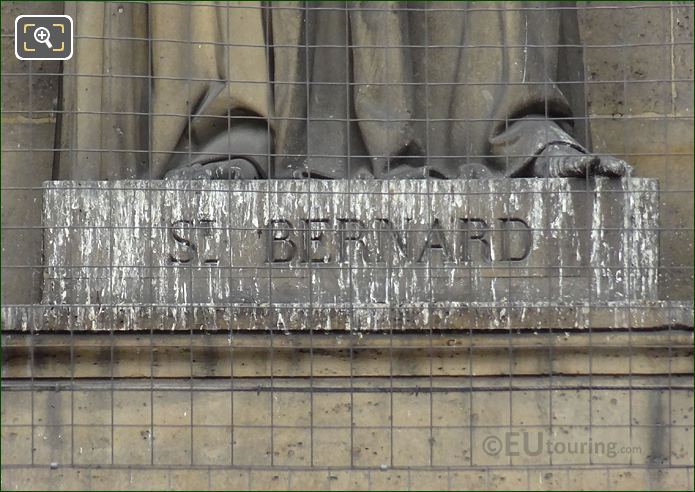 Now Saint Bernard was born to a noble family and studied literature in order that he could study the bible, and becoming a monk, he is also known as Saint Bernard of Clairvaux, due to the fact that he founded a monastery he named Claire Vallee, or Clairvaux, he was pronounced an Abbot by the bishop who was head of theology at the Notre Dame de Paris.
The theology and Mariology of Bernard have continued to be of major importance throughout the centuries and he was the first Cistercian monk to be placed on the Roman calendar of saints when canonized by Pope Alexander III on 18th January 1174, and 800 years after his death Saint Bernard was also given the title of Doctor of the Church by Pope Pius VIII, with his feast day being 20th August, the day Saint Bernard passed away in 1153.
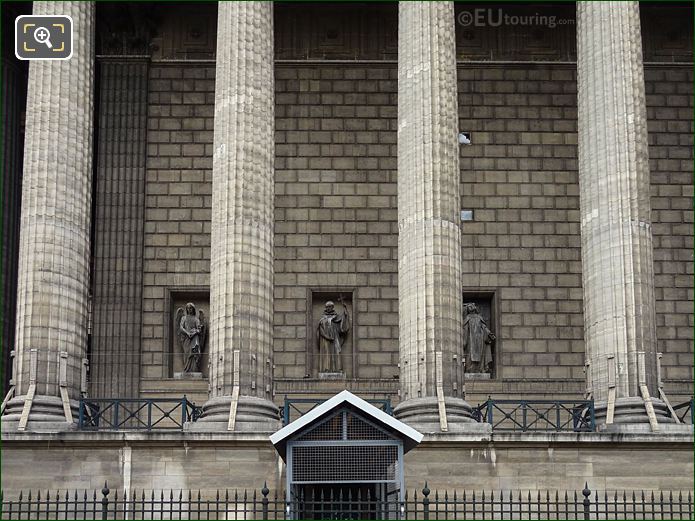 So this image shows the location of the Saint Bernard statue within a niche on the eastern portico facade of the Eglise de la Madeleine, and this can be seen through the well recognisable Corinthian columns from the square named after this famous church, where even the funeral of Chopin took place.
https://www.eutouring.com/images_paris_statues_1029.html |
|
|
|
|
| Santa Bernardita Soubirous |
 |
| Información personal |
| Nombre de nacimiento |
Maria-Bernada Sobirós (original en occitano)
Marie-Bernarde Soubirous (en francés)
María Bernarda Soubirous (en español) |
| Nombre en francés |
Bernadette Soubirous ii  |
| Nacimiento |
7 de enero de 1844
 Lourdes, Francia Lourdes, Francia |
| Fallecimiento |
16 de abril de 1879 (35 años)
 Nevers, Francia Nevers, Francia |
| Causa de muerte |
Tuberculosis  |
| Sepultura |
Nièvre  |
| Nacionalidad |
Francesa |
| Religión |
Iglesia católica  |
| Lengua materna |
Occitano |
| Familia |
| Padres |
François Sobirós
Louise Castérot |
| Información profesional |
| Ocupación |
Monja  |
| Información religiosa |
| Beatificación |
14 de junio de 1925 |
| Canonización |
8 de diciembre de 1933 |
| Festividad |
16 de abril
18 de febrero (Culto local) |
| Venerada en |
Iglesia católica |
| Patronazgo |
Si bien la Virgen María en su advocación de Nuestra Señora de Lourdes es considerada por la Iglesia católica la principal patrona de los enfermos, se asocia por extensión a Bernadette con la protección de los mismos, como también de personas ridiculizadas por su piedad, de pobres, y de pastoras y pastores |
| Santuario |
Santuario de Lourdes |
| Orden religiosa |
Hijas de la Caridad de Nevers |
|
|
|
|
|
|
|
|
|
Los templarios y el culto a las Vírgenes Negras (II). San Bernardo y María Magdalena

Isis con Horus niño
La influencia que tuvo S. Bernardo en la Orden es indiscutible y los caballeros templarios heredaron los antiguos ritos de la Francia septentrional que evolucionaron gracias al santo considerado como el último de los druidas. Tras la derrota en S. Juan de Acre en 1291 se pierde Tierra Santa y son obligados a marcharse todos los cristianos; es entonces cuando la Orden del Temple se refugia en Chipre, donde tenían muchas posesiones. La Casa de María en Nazaret, la «Santa Casa», fue piedra a piedra desmontada y trasladada en los barcos templarios a Italia. La supresión del Temple supuso la diáspora de los caballeros; algunos ingresaron en otras ordenes y otros fueron encarcelados y condenados a cadena perpetua por los inquisidores. ¿Qué papel juega María Magdalena en la orden? Para muchos autores María Magdalena era «Nuestra Señora» de la casa de Betania, de modo que cuando se utiliza la advocación a Nuestra Señora se están refiriendo a ella y no a la Virgen María como la iglesia católica se empeña en proclamar; de hecho en todas las catedrales e iglesias del Temple, María Magdalena ocupa un lugar destacado. Por otra parte, cuando S. Bernardo hace el llamamiento para la segunda cruzada desde la iglesia de Santa María Magdalena en Vézelay, lo hace en unos términos que parece que está reclamando las tierras de la estirpe sagrada de María Magdalena. A todo ello se añade el hecho de que los restos mortales de la santa, descubiertos en 1279 por Carlos II de Anjou, se hallaban custodiados en la cripta de Saint Maximin. Por todo ello muchos autores afirman que María Magdalena sería en realidad la esposa de Jesucristo y habría que preservar su estirpe real. Volviendo a los templarios, parece ser que estos descubren en las caballerizas del Templo de Salomón algo que solo comunican al papa Honorio II, al Patriarca de Jerusalén y a S. Bernardo de Claraval. Este hecho o la información que poseía S. Bernardo conduce a los caballeros hasta Egipto y más concretamente al templo de la diosa egipcia Isis en la isla de Philae. (continuará)
|
|
|
|
|
The Nard of Mary-Magdalene
My fools for senses,
Today, we shall be looking for an answer centuries of commentors failed to provide. Following our Review of Irrévérent and its unusual accord of oud and lavender, we decided to ponder awhile on this last ingredient which we thought we knew too well. Most of all, we wanted to envision it with a new eye : that of theology. Of history and literature and cooking and anthropology.
For indeed lavender passed through many cultures and through many readings did we stumble upon a most startling fact : that nard and lavender, in the Bible, are one. Thus, my fools for senses, let us discover today what really hid behind the Nard of Mary-Magdalene.
All good adventure movies start with a writing on a wall or in a book in our case. In the Bible, really. “Mary, having taken an ounce of pure nard anointed with it the feet of Jesus” This moving scene will very lively raise more than one question in the reader's mind : whatever is nard and why use it to anoint the Christ's feet ?
To properly grasp what nard is or was, one must look at its history and all the times it was mentioned. As far as we can tell around the Mediteranean Sea, Dioscorides spoke of nard in De Materia Medica. Of more than one actually. He lists a Syrian nard, an Indian nard and a Celtic nard. According to him, the Syrian nard got its name from the fact that it grows on the western slope of a mountain range -he was probably referring to the Hindu Kush. He also says its sweet aroma is close to that of nard from Cyprus. Indian nard is apparently smoother and more watery considering it grows in the Gange basin. The Celtic nard at last is both sweet and suave. He also mentions a wild nard growing in the mountains known already by the Gauls. As for Pliny the Elder, in his Natural History he lists a numerous variety of nards and one in particular that was so sweet-smelling that it was a most sought-after oil.
Roman literature is also a good resource when it comes to perfumes. In his Odes –the tenth to be more precise- Horace speaks of an « Assyrique nardo », Assyrian nard, whereas Petronius in his Cena Trimalchionis has one of his characters open an « ampullam nardi », a phial of nard, which was then rubbed on al the guests’ noses. Knowing the musty, musky scent of nard, one might be surprised upon reading so many lauds to it and the Roman nobility anointing their noses with it as they end a banquet. However, there happens to be mentions of nard in the Apicius, a Roman cookbook, according to which a few drops of nard might be useful to freshen a stale broth.
This occurrence of nard in a cookbook really raised our eyebrows and convinced us that nard was in fact lavender but how did the Romans end up confusing both ?
One must go back to the origins. Nard was named after the Assyrian city of Nuhadra –in actual Iraq- sitting on the banks of the Tigris river. Probably known for trading precious oils, one might say it was the starting point of spikenard trading routes going west into the Roman Empire although the nard existed way before the Romans. Already is it seen in a recipe for the anointing oil of Parthian kings as well as in Arrian’s Anabasis in a curious tale where the soldiers, as they traverse the desert of Gadrosia, find themselves trampling a « grass of nard » which then exhaled a sweet-smelling aroma. Research has now shown that this so-called nard was in fact…lemongrass.
To establish a link between the freshness of lemongrass and that of lavender isn’t much of a stretch.
Moreover, we looked for answers into the Eastern Orthodox tradition, which has gone uninterrupted since the early years of our era. After having ordered many an incense and nard-scented oils, we realised they were in fact all perfumed with lavender. Thus, we wondered why Mary-Magdalene anointed Jesus’ feet with nard –or lavender.
For so, let us dive into the writings. In the famous passage, St John writes : « nardou pistikes », « pure nard ». Some translated it into « true nard » as opposed to the fake one being lavender however we still think that « pistikes » has nothing to do with botanics. The Peshitta, an Aramaic translation of the Gospels, wrote : « dnardeen reeshaya ». Reeshaya here means « the best », of great quality. The symbolical use of the word reeshaya is most clearly seen in the Gospel of St Mark where Mary-Magdalene breaks « of pure nard. » on Jesus’ « head ». The Peshitta writes : « dnardeen reeshaya (…) al reesheh dyeshoo » a play on the words « reeshaya » which we’d roughly translate to : she poured the best on the Best.
Why pouring nard, though ? Or rather lavender ?
It is now known that myrrh is a symbol for death. It would thus have been very clever of Mary-Magdalene to anoint Jesus’ feet with it as a sign of his upcoming death and burial but she chose lavender. As such, her anointement is nothing short of a prophecy, lending us precious informations on the secret symbolism hidden behind lavender.
We read how the Ancients confused nard with lavender but we must now explain why they did so for they spoke of spikenard and lavender spike. The first bore its name from the fact its root looked like it was spiking out of the stem. The latter bore its name from its resemblance to an ear of wheat and this is precisely where we need investigate for therein lies the key to understanding the real meaning of lavender and solve a millenial controversy.
When Mary Magdalene poured lavender spike on Jesus’ feet, she accomplished a prophetic gesture of which she had probably no knowledge –as most prophecies in the New Testament. Along with St John whose head lies on Jesus’ chest - announcing the theosis- and the Virgin Mary who looked westward as her baby lay in her arms –announcing the Passion- Mary Magdalene announces the Passion and Resurrection. For as she poured the best on the Best, it is precisely the oil of the best ear of wheat which she poured upon He who compared himself to a « kernel of wheat ». This gesture is a clear reference to the words of Jesus saying on the eve of his death : « Unless a kernel of wheat falls to the ground and dies, it remains only a single seed. But if it dies, it produces many seeds »
The anointing of Jesus’ feet in the Gospel of Saint John heralds that of the myrrh-bearers and his Resurrection and of the Holy Spirit as it shone on his head upon his descent in the Hades, to a crown of light inextinguishable alike.
What we must understand is that lavender is akin to the light which shrouded the Christ as he went down into the Hades. Furthermore, mediaeval traditions will swiftly associate lavender to the virtue of keeping evil and dark spirits at bay. Lavender is a twig of life, fortifying the heart of Men ; it is the scent we smell as we leave a heartwarming feast, saying « I only hope it will give me as much pleasure when I'm dead as it does now when I'm alive. » It the the flower of foreseers, of those who see beyond appearances and the simple planes of existence.
The flower of they who want to trample and have trampled down death. The flower of soldiers as they traverse the desert, the flower of queens and kings chasing away all sorrows and withering of the soul.
Even more so than frankincense, lavender and its hues of violets and blues, is the perfect flower to connect us to the ethereal worlds. It clings to our soul and lifts it up and says to all and to us foremost that Love, over death, has won.
Your goodness and nard will follow me,
All the days of my life.
https://www.theperfumechronicles.com/chronicles/nard |
|
|
|
|
 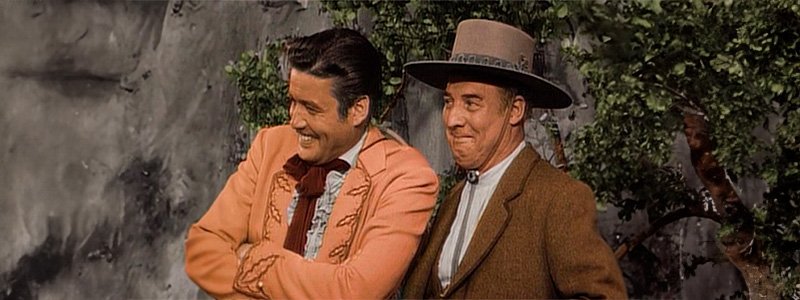 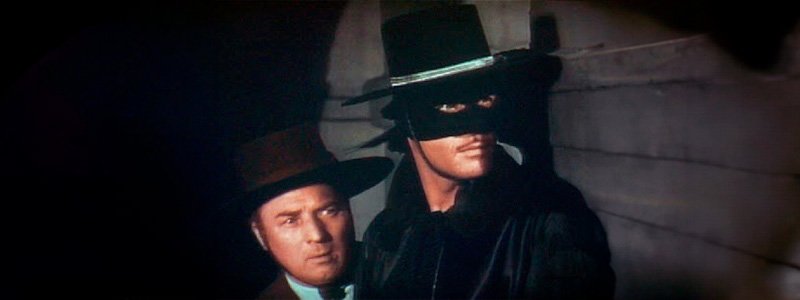 
The Nard of Mary-Magdalene
My fools for senses,
Today, we shall be looking for an answer centuries of commentors failed to provide. Following our Review of Irrévérent and its unusual accord of oud and lavender, we decided to ponder awhile on this last ingredient which we thought we knew too well. Most of all, we wanted to envision it with a new eye : that of theology. Of history and literature and cooking and anthropology.
For indeed lavender passed through many cultures and through many readings did we stumble upon a most startling fact : that nard and lavender, in the Bible, are one. Thus, my fools for senses, let us discover today what really hid behind the Nard of Mary-Magdalene.
All good adventure movies start with a writing on a wall or in a book in our case. In the Bible, really. “Mary, having taken an ounce of pure nard anointed with it the feet of Jesus” This moving scene will very lively raise more than one question in the reader's mind : whatever is nard and why use it to anoint the Christ's feet ?
To properly grasp what nard is or was, one must look at its history and all the times it was mentioned. As far as we can tell around the Mediteranean Sea, Dioscorides spoke of nard in De Materia Medica. Of more than one actually. He lists a Syrian nard, an Indian nard and a Celtic nard. According to him, the Syrian nard got its name from the fact that it grows on the western slope of a mountain range -he was probably referring to the Hindu Kush. He also says its sweet aroma is close to that of nard from Cyprus. Indian nard is apparently smoother and more watery considering it grows in the Gange basin. The Celtic nard at last is both sweet and suave. He also mentions a wild nard growing in the mountains known already by the Gauls. As for Pliny the Elder, in his Natural History he lists a numerous variety of nards and one in particular that was so sweet-smelling that it was a most sought-after oil.
Roman literature is also a good resource when it comes to perfumes. In his Odes –the tenth to be more precise- Horace speaks of an « Assyrique nardo », Assyrian nard, whereas Petronius in his Cena Trimalchionis has one of his characters open an « ampullam nardi », a phial of nard, which was then rubbed on al the guests’ noses. Knowing the musty, musky scent of nard, one might be surprised upon reading so many lauds to it and the Roman nobility anointing their noses with it as they end a banquet. However, there happens to be mentions of nard in the Apicius, a Roman cookbook, according to which a few drops of nard might be useful to freshen a stale broth.
This occurrence of nard in a cookbook really raised our eyebrows and convinced us that nard was in fact lavender but how did the Romans end up confusing both ?
One must go back to the origins. Nard was named after the Assyrian city of Nuhadra –in actual Iraq- sitting on the banks of the Tigris river. Probably known for trading precious oils, one might say it was the starting point of spikenard trading routes going west into the Roman Empire although the nard existed way before the Romans. Already is it seen in a recipe for the anointing oil of Parthian kings as well as in Arrian’s Anabasis in a curious tale where the soldiers, as they traverse the desert of Gadrosia, find themselves trampling a « grass of nard » which then exhaled a sweet-smelling aroma. Research has now shown that this so-called nard was in fact…lemongrass.
To establish a link between the freshness of lemongrass and that of lavender isn’t much of a stretch.
Moreover, we looked for answers into the Eastern Orthodox tradition, which has gone uninterrupted since the early years of our era. After having ordered many an incense and nard-scented oils, we realised they were in fact all perfumed with lavender. Thus, we wondered why Mary-Magdalene anointed Jesus’ feet with nard –or lavender.
For so, let us dive into the writings. In the famous passage, St John writes : « nardou pistikes », « pure nard ». Some translated it into « true nard » as opposed to the fake one being lavender however we still think that « pistikes » has nothing to do with botanics. The Peshitta, an Aramaic translation of the Gospels, wrote : « dnardeen reeshaya ». Reeshaya here means « the best », of great quality. The symbolical use of the word reeshaya is most clearly seen in the Gospel of St Mark where Mary-Magdalene breaks « of pure nard. » on Jesus’ « head ». The Peshitta writes : « dnardeen reeshaya (…) al reesheh dyeshoo » a play on the words « reeshaya » which we’d roughly translate to : she poured the best on the Best.
Why pouring nard, though ? Or rather lavender ?
It is now known that myrrh is a symbol for death. It would thus have been very clever of Mary-Magdalene to anoint Jesus’ feet with it as a sign of his upcoming death and burial but she chose lavender. As such, her anointement is nothing short of a prophecy, lending us precious informations on the secret symbolism hidden behind lavender.
We read how the Ancients confused nard with lavender but we must now explain why they did so for they spoke of spikenard and lavender spike. The first bore its name from the fact its root looked like it was spiking out of the stem. The latter bore its name from its resemblance to an ear of wheat and this is precisely where we need investigate for therein lies the key to understanding the real meaning of lavender and solve a millenial controversy.
When Mary Magdalene poured lavender spike on Jesus’ feet, she accomplished a prophetic gesture of which she had probably no knowledge –as most prophecies in the New Testament. Along with St John whose head lies on Jesus’ chest - announcing the theosis- and the Virgin Mary who looked westward as her baby lay in her arms –announcing the Passion- Mary Magdalene announces the Passion and Resurrection. For as she poured the best on the Best, it is precisely the oil of the best ear of wheat which she poured upon He who compared himself to a « kernel of wheat ». This gesture is a clear reference to the words of Jesus saying on the eve of his death : « Unless a kernel of wheat falls to the ground and dies, it remains only a single seed. But if it dies, it produces many seeds »
The anointing of Jesus’ feet in the Gospel of Saint John heralds that of the myrrh-bearers and his Resurrection and of the Holy Spirit as it shone on his head upon his descent in the Hades, to a crown of light inextinguishable alike.
What we must understand is that lavender is akin to the light which shrouded the Christ as he went down into the Hades. Furthermore, mediaeval traditions will swiftly associate lavender to the virtue of keeping evil and dark spirits at bay. Lavender is a twig of life, fortifying the heart of Men ; it is the scent we smell as we leave a heartwarming feast, saying « I only hope it will give me as much pleasure when I'm dead as it does now when I'm alive. » It the the flower of foreseers, of those who see beyond appearances and the simple planes of existence.
The flower of they who want to trample and have trampled down death. The flower of soldiers as they traverse the desert, the flower of queens and kings chasing away all sorrows and withering of the soul.
Even more so than frankincense, lavender and its hues of violets and blues, is the perfect flower to connect us to the ethereal worlds. It clings to our soul and lifts it up and says to all and to us foremost that Love, over death, has won.
Your goodness and nard will follow me,
All the days of my life.
https://www.theperfumechronicles.com/chronicles/nard
|
|
|
|
|
Secrets of the Knights Templar
They’re shrouded in mystery and conspiracy theories. A history scholar unpacks their real story.
Just mention the Knights Templar and the conspiracy theories start flying. But just who were the medieval Knights of the Temple? What was their job and what happened to them? Why do they still capture our imaginations? The Knights of the Temple—the Templars, for short—were established in the early 1100s under a Rule written by Bernard of Clairvaux,a famous Cistercian abbot. He modified existing Rules for religious monastic communities to fill the need for an armed order in light of the Crusades. This Rule and the Templars’ lifestyle became the model for about a dozen other religious military orders in the Middle Ages.
There are versions of these orders today, some of which can trace their lineage directly back to medieval ancestors. Others have chosen to emulate the original orders but adapt them to our times. These contemporary communities, now often composed of men and women, have turned to massive charitable and philanthropic projects and to protecting endangered Christians. One example of an adapted version of the medieval Templars is the Sovereign Military Order of the Temple of Jerusalem. Other modern expressions of medieval orders are the Knights of Columbus, the Knights and Dames of Malta (who trace their lineage back to the Hospitallers of St. John), and the Knights of the Holy Sepulchre.
Let’s take a look at the history behind the legend of these highly influential knights. It is a tale of medieval palace intrigue worthy of a Hollywood movie, which doesn’t have to make things up to be true.
Monk-Warriors
The story starts at the time of the Crusades. In 1095, Pope Urban II called for European Christian knights to stop fighting each other and to retake the Holy Land from the Muslims. The pope’s speech sent thousands of knights, infantrymen, and a large supporting workforce streaming across Europe, resulting in the taking of Jerusalem in 1099. But these were not unified armies under a tight leadership team. Many knights behaved shamefully and certainly did not live up to the standards of chivalry and charity—even toward fellow Christians. Clearly there was a need for order, control, and standards.
The Templars had their origins at just this point in time. At first, there were about 10 French knights with their retinues escorting pilgrims from the Mediterranean coast to the holy city of Jerusalem and other sites in the area, such as Bethlehem, Bethany, Nazareth, and the Jordan River. The Muslims quickly regrouped, however, and began to take land back in this same period. Their victories led to the Second Crusade (1147‚ 1149), which was promoted by that same Bernard of Clairvaux.
By this time, it was clear that in order for the European Christians to maintain their hold on Jerusalem and keep the passages to Jerusalem safe, a more organized and permanent military presence needed to be set up. Most of the knights from the First Crusade simply left Jerusalem after taking the city in 1099. That group of French escorting knights, then, became the seed for the Templars.
In his Rule for the order, In Praise of the New Knighthood, written in 1128, Bernard of Clairvaux called these fighting men “knights of Christ.” He envisioned them as monk-warriors. The Templars and other orders at first saw their task as fighting to protect pilgrims in the Holy Land, even if that meant taking up arms while still holding to the three traditional monastic vows of poverty, chastity, and obedience. Later, it meant protecting the faith from internal threats caused by heretics, once again by violence, if necessary.
Bernard captured the paradox when he said that the knights must be “gentler than lambs, yet fiercer than lions. I do not know if it would be more appropriate to refer to them as monks or as soldiers, unless perhaps it would be better to recognize them as being both.” He described the model Templar as “truly a fearless knight and secure on every side, for his soul is protected by the armor of faith just as his body is protected by armor of steel.”
Bernard also drew on the just-war tradition to say that, in certain circumstances, Templar violence was permitted and not sinful. “If he fights for a good reason, ” Bernard wrote, “the issue of his fight can never be evil.” Elsewhere in his Rule for the Templars, Bernard stated, “To inflict death or to die for Christ is no sin, but rather, an abundant claim to glory.” So for the Templars, fighting the infidel (literally, “the unfaithful ones”) meant the Muslims in the Holy Land.
The World of the Templars
The Templars took their name from their headquarters, situated on the Temple Mount in Jerusalem. This is where Solomon’s Temple had stood from about 970 BC until it was destroyed in 587 BC by King Nebuchadnezzar, who took the Israelites back to Babylon and left Jerusalem a backwater. Centuries later, about 20 BC, the client-king of the Romans, Herod, began to rebuild the Temple, which has come to be known as Herod’s Temple, Jesus’ Temple, or the Second Temple. It was barely completed before it was destroyed by Roman imperial forces in AD 70. Over a thousand years later, the elite knights envisioned by Bernard established their command center in what some still called Solomon’s Temple or Palace.
At its height during the crusading centuries, the Knights of the Temple included about 300 knights who had taken the three standard vows. Many of these vowed knights were in their 20s when they joined. They were supposed to be unmarried, free of debt, and of legitimate birth. They wore a distinctive tunic and wielded shields painted white with a prominent red cross.
The knights were joined by as many as 900 soldiers who were not noble and fought on foot—an infantry to complement the knights’ cavalry.
There would have been hundreds of others, which we would call support staff, employed by the order: blacksmiths, squires, women to cook and take care of clothing, and armorers. Some of the men among this support staff were like lay brothers in other religious orders, such as the Benedictines or Cistercians.
The Templars, like medieval monasteries and convents, were run very collaboratively. They held property and goods in common, making decisions about them and all other matters by vote. They were led by a grand master chosen by the vowed knights in an election.
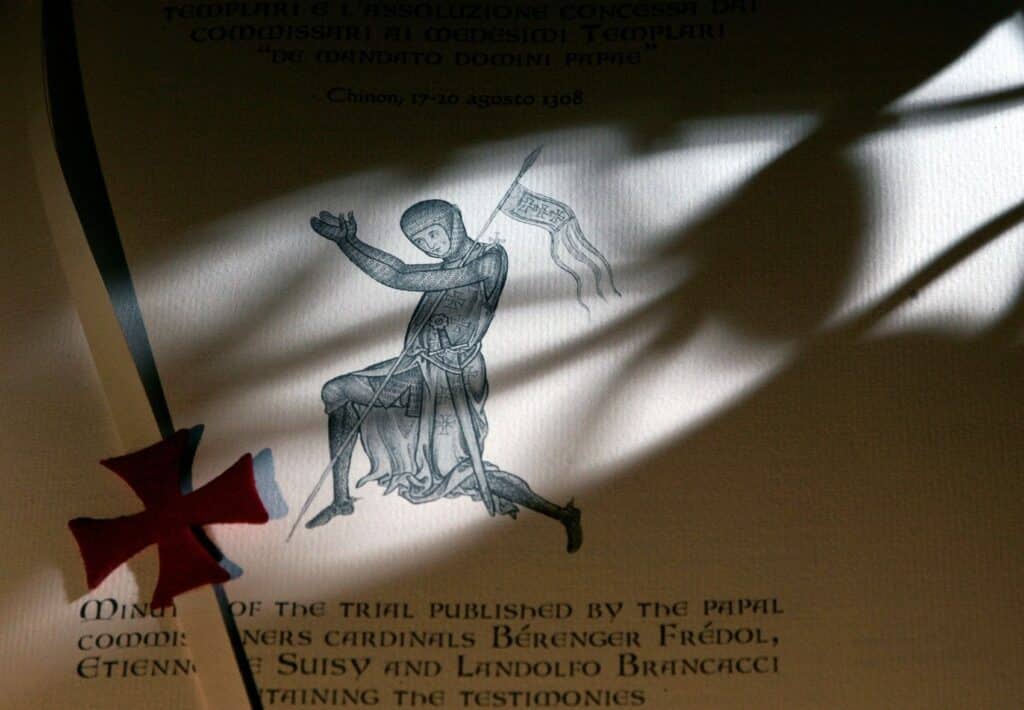 A detail is shown on a replica in which Pope Clement V absolved the Knights Templar of heresy. (CNS photo/Alessandro Bianchi, Reuters)
At the same time, however, elements of Templar life drew attention and led to rumors about them. They reported directly to the pope. They were also exempt from paying taxes, which increasingly became a big deal as they amassed huge areas of land. The Templars also attracted patrons quickly and in large numbers across western Europe.
They eventually enjoyed a network of nearly 2,000 castles, houses, and estates. (A modern-day analogy might be America’s super-wealthy robber baron families who built huge mansions they called cottages in the days before income tax.) We can see the mysteries that persist today started early.
Behind Closed Doors
Above all, the Templars held all of their deliberations and votes in secrecy. When they were fighting the infidel and protecting pilgrims, this was not an issue. But when the Crusades ran their course and Muslims systematically took back Holy Land territory and negotiated treaties for safe passage for Christian pilgrims, the Templars began to lose their reason for being there. When Muslims took Acre in 1291, Holy Land crusading effectively ended—leading to the next and final chapter for the Templars.
With no need to fight in the Holy Land, the Templars largely turned from military affairs to the worlds of finance, estate management, trade, banking, and overseeing investments along their network of tax-exemptproperties in Europe. They were likely the richest operation in the Middle Ages, essentially making them Europe’s ATM.
They were not without enemies, and their worst one was Philip IV, king of France. He is also known to history as Philip the Fair (le Bel), who reigned from 1285 to 1314. He had been trying to control the papacy and Church in France for some time by taxing the clergy without papal permission.
Effectively, he was trying to separate Catholic France from papal authority (later known as Gallicanism). Philiphad particularly tangled with a stubborn pope named Boniface VIII (1294‚ 1303). The king had even sent armed men to intimidate Boniface because the pope planned to excommunicate him. Boniface died shortly after this verbal assault and physical threat, perhaps as a result of the shock of the ugly episode.
Philip continued to pressure the papacy, this time in the person of the weak Pope Clement V (1305–1314), the first of the line of 14th-century popes who resided in Avignon and not Rome. This royalty-versus-papacy fightimp acted the Templars because Philip was in a towering pile of debt to the military order. Trying to get out of repaying, the French king accused the Templars of losing the Holy Land and not living up to their own high standards. Now he had the pope as a powerful tool to attack the Templars.
To take them down, Philip exploited the mystery behind the Templar practice of secrecy. He accused them of black magic, sodomy, and desecration of the cross and Eucharist. The French king engineered an overnight mass arrest of Templars in October 1307. Over the next four years, nearly all Templars were exonerated at trials held across Europe with the notable exception of France. There, after being tortured, some Templars confessed to doing things like spitting on the cross or denying Jesus during secret initiation rites. Many later took those confessions back, saying they had admitted such things only under pain and fear of death.
The End of an Era
The final act took place at the general Church council held at Vienne from 1311 to 1312. Philip was in charge and made sure only bishops supporting him and not Pope Clement were present, to the point of knocking the names of anti-royal bishops off the list of those invited. Even under pressure from the French king, the bishops still voted in a large majority against abolishing the Templars and said the charges against them were not proven.
Philip played his hand by threatening violence against a pope once again. He pressured Clement to condemn his papal predecessor Boniface as a heretic. What the French king really wanted was to get out of debt to the Templars and seize their assets. Pope Clement allowed the Templars to be railroaded by trading off that threat against Boniface, which would endanger his own position as a papal successor. Clement went against his bishops and suppressed the Knights of the Temple on his own papal authority. Quite simply, the pope had been bullied by the king and he gave in. Clement praised “our dear son in Christ, Philip, the illustrious king of France,” adding remarkably, “He was not moved by greed. He had no intention of claiming or appropriating for himself anything from the Templars’ property.”
But instead of handing their money and property over to Philip, as the king wanted, the pope showed some courage and assigned the Templar assets over to the Knights of the Hospital (the Hospitallers). Philip got his cut, of course, and was out of debt to an order that no longer existed, but he didn’t win entirely. Pope Clement never said whether or not the Templars were guilty of heresy or other crimes.
In fact, in 2001, Vatican researcher Barbara Frale discovered in the archives there a misfiled document that has come to be called the Chinon Parchment. This collection details trial and investigation records in Latin from 1307 to 1312. A measure of the continuing interest in the Templars may be found in the fact that a limited reproduction edition of the Chinon Parchment was produced in 2007. Titled Processus Contra Templarios (“Trial against the Templars”), each of the 799 copies cost over $8,000. The 800th copy was given for free to Pope Benedict XVI.
The Chinon Parchment proves that Pope Clement definitely believed in 1308 that the charge of heresy against the Templars was not true, although they were guilty of other, smaller crimes. But Clement just wasn’t strong enough to protect the Templars from annihilation. Finally, in 1314, the Templar Grand Master Jacques de Molay was burned at the stake as a lapsed heretic after he retracted his tortured confession and asserted his innocence. The history of the Templars had come to an end, but its reputation for secrecy and all of this palace intrigue seemed destined to make the myths about them continue to live on.
Sidebar: Conspiracies and the Templars
Because of their secrecy and power, the Templars have refused to die—in myth if not in fact. In part because people want to believe nearly anything about the Church (witness the legend of Pope Joan), the Templars are ripe for exploitation. Spend 10 minutes searching the Internet with the words Templars and conspiracy.
The Templars show up as mysterious and shadowy figures in Hollywood movies like The Da Vinci Code, where they are linked with the Priory of Sion as guardians of Jesus’ alleged descendants with Mary Magdalene. Take nearly any mysterious group or object and the Templars are linked by innuendo and rumor: the Temple Mount, the Ark of the Covenant, the Holy Grail, the True Cross, the Shroud of Turin, and the Freemasons. One legend says they magically appeared to turn the tide of a battle in Scotland. Another claims they crossed the Atlantic Ocean before Columbus. Some of the wilder stories tie the Templars to President John F. Kennedy’s assassination in 1963 and even Pope Benedict XVI’s resignation in 2013—and that’s before we get to the video games and The Templar Code for Dummies.
Perhaps all of this spookiness can be brought back to their end. It happened that the Templars were rounded up on Friday the 13th of October, 1307, which some people claim is the root of that feared calendar date. Moreover, as he went to his death at the stake, Grand Master Jacques de Molay supposedly issued a curse that he would meet PopeClement and King Philip with God within a year—and indeed both pope and king died shortly after.
https://www.franciscanmedia.org/st-anthony-messenger/secrets-of-the-knights-templar/ |
|
|
|
|
Bernard of Clairvaux
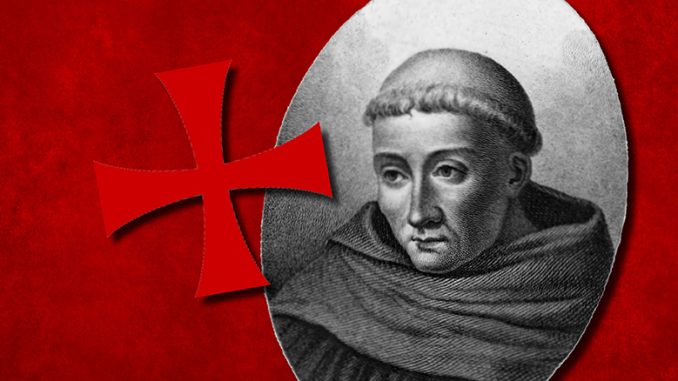
Above: Bernard of Clairvaux
by Alan Butler
Born Fontaine de Dijon France 1090
Died Clairvaux, near Troyes, Champagne France August 20th 1153
Bernard of Clairvaux may well represent the most important figure in Templarism. In our opinion past researchers have generally failed to credit St Bernard with the pivotal role he played in the planning, formation and promotion of the infant Templar Order. Whether an ‘intention’ to create an Order of the Templar sort existed prior to the life of St Bernard himself is a matter open to debate. (See ‘The Templar Continuum’ Butler and Dafoe, Templar Books 2,000).
The son of Tocellyn de Sorrell, Bernard was born into a middle-ranking aristocratic family, which held sway over an important region of Burgundy, though with close contacts to the region of Champagne. There is some dispute as to whether Bernard’s father had fought in the storming of Jerusalem in 1099, and indeed whether he died in the Levant. The question appears to be easily answered for in the small Templar type Church in St Bernard’s birthplace there is a marble plaque that states the Church was built by St Bernard’s mother in thanks for the safe return of her husband from the Crusade.
St Bernard was a younger member of an extremely large family. He appears to have received a good, standard education, at Chatillon-sur-Seine, which fitted him, most probably, for a life in the Church, which, of course, is exactly the direction he eventually took. Many stories exist regarding Bernard’s early years – his visions, torments and realisations. All of these were attributed to Bernard after his canonisation and therefore must surely be taken with a pinch of salt. What does seem evident is that Bernard was bright, inquisitive and probably tinged with a sort of genius. Certainly he was a fantastic organiser and possessed a charisma that few could deny.
St Bernard enters history in an indisputable sense at the age of 23 years, when together with a very large group of his brothers, cousins and maybe other kin, (probably between 25 and 30) he rode into the abbey of Citeaux, Dijon. This abbey was the first Cistercian monastery and had been set up somewhat earlier by a small band of dissident monks from Molesmes. Much can be found elsewhere in these pages relating specifically to the Cistercians. At the time of St Bernard’s arrival the abbey was under the guiding hand of Stephen, later St Stephen Harding, an Englishman.
Bernard announced his determination to follow the Cistercian way of life and together with his entourage he swamped the small abbey, swelling the number of brothers there to such an extent that it was inevitable that more abbeys would have to be formed.
Only three years later St Bernard, still an extremely young man, (25 years) was dispatched, together with a small band of monks, to a site at Clairvaux, near Troyes, in Champagne, there to become Abbott of his own establishment. It is known that the land upon which Clairvaux was built was donated by the Count of Champagne, based at the nearby city of Troyes.
St Bernard was a visionary, a man of apparently tremendous religious conviction. He could be irascible and domineering at times, but seems to have been generally venerated and well liked by those around him. Bernard suffered frequent bouts of ill health, almost from the moment he joined the Cistercians. This continued for the remainder of his life and may have demonstrated an inability on the part of his digestive system to cope with the severe diet enjoyed or rather endured by the Cistercians at the time.
Bernard’s influence grew within the established Church of his day. With a mixture of simple, religious zeal and some extremely important family connections, this little man involved himself in the general running, not only of the Cistercian Order, but the Roman Church of his day. Bernard was instrumental in the appointment of GREGORIO PAPARESCHI, Pope Innocent II in the year 1130, despite the fact that not all agencies supported the man for the Papal throne. Bernard walked hundreds of miles and talked to a great number of influential people in order to ensure Innocent’s ultimate acceptance. His success in this endeavour marked St Bernard as probably the most powerful man in Christendom, for as ‘Pope Maker’ he probably had more influence than the Pontiff himself.
This appointment should not be underestimated, for it was Pope Innocent II who formally accepted ‘The Poor Knights of Christ and the Temple of Solomon’ (The Knights Templar) into the Catholic fold. This he did, almost certainly, at the behest of Bernard and possibly as a result of promises he had made to this end at the time Bernard showed him the support which led to the Vatican.
To understand St Bernard’s importance to Cistercianism it is first necessary to study the Order in detail. In brief however it would be fair to suggest that Bernard’s own personality, drive and influence saw the Cistercians growing from a slightly quirky fringe monastic institution to being arguably the most significant component of Christian monasticism that the Middle Ages ever knew.
In addition to this St Bernard consorted with Princes, Kings and Pontiffs, even directly ‘creating’ his own Pope, BERNARDO PAGANELLI DI MONTEMAGNO (Eugnius III) who became Pontiff in 1145. This man had been a noviciate of St Bernard at Clairvaux and was, in all respects, St Bernard’s own man. From this point barely a decision was made in Rome that was not influenced in some way by St Bernard himself.
Much could be written about the ‘nature’ of St Bernard. He was a staunch supporter of the Virgin Mary, a visionary and a man who had a profound belief in an early and very ‘Culdean’ form of Christianity. This is exemplified by the short verse he once wrote.
‘Believe me, for I know, you will find something far greater in the woods than in books. Stones and trees will teach you that which you cannot learn from the masters.’
St Bernard staunchly supported what amounted to an utter veneration of the Virgin Mary for the whole of his life and was also an enthusiastic supporter of a rather strange little extract from the Old Testament, entitled ‘Solomon’s Song of Songs’.
How and why St Bernard became involved in the formation of the Knights Templar may never be fully understood. There is no doubt that he was blood-tied to some of the first Templar Knights, in particular Andre de Montbard, who was his maternal uncle. He may also have been related to the Counts of Champagne, who themselves appear to have been pivotal in the formation of the Templar Order.
For whatever reason St Bernard wrote the first ‘rules’ of the Templar Order. He may have undertaken this task personally and they were based, almost entirely, on the Order adopted by the Cistercians themselves. The Templars were officially declared to be a monastic order under the protection of Church in Troyes in 1139. Bernard went further and insisted that Pope Innocent II recognised this infant order as being solely under the authority of the Pope and no other temporal or ecclesiastical authority. It is a fact that the Templars venerated St Bernard from that moment on, until their own demise in 1307. St Bernard’s influence on the Templars is therefore pivotal to the whole of the movement’s aims and objectives and in our opinion no researcher should ever underestimate Bernard’s importance with this regard.
St Bernard travelled extensively, negotiated in civil disturbances and, surprisingly for the period, was instrumental in preventing a number of pogroms taking place against Jews in various locations within what is present day France. A staunch supporter of an Augustinian view of the mystery of the Christian faith, St Bernard was fiercely opposed to ‘rationalistic’ views of Christianity. In particular he was a staunch opponent of the dialectician ‘Peter Abelard’, a man whom St Bernard virtually destroyed when Abelard refused to accept Bernard’s own criticism of his radical ideas.
Although travelling extensively on many and varied errands during his life, St Bernard always returned to his own abbey of Clairvaux, which it seems (to us at least) had been deliberately built in a location that allowed free travel in all directions. It is suggested that Clairvaux was peopled with all manner of scholars, some of whom may well have been Jewish scribes. It is also true to say that if Citeaux remained the ‘head’ of the Cistercian movement during the life of St Bernard, Clairvaux lay at its heart. Clairvaux became the Mother House of many new Cistercian monasteries, not least of all Fountaines Abbey in Yorkshire, England, which itself was to rise to the rank of most prosperous abbey on English soil.
St Bernard died in Clairvaux on August 20th 1153, a date that would soon become his feast day, for St Bernard was canonised within a few short years of his death. Space here does not permit a full handling of this extraordinary man’s life or his interest in so many subjects, including architecture, music and (probably) ancient manuscripts. After his death a cult of St Bernard rapidly developed. At the time of the French Revolution St Bernard’s skull was taken for safekeeping to Switzerland, eventually finding its way back to Troyes. It is now housed in the Treasury of Troyes Cathedral and can be seen there, together with the skull and thighbone of St Malachy, a friend and contemporary of St Bernard.
A much fuller and more comprehensive detailed biography of St Bernard’s life can be found in ‘The Knights Templar Revealed’ Butler and Dafoe, Constable and Robinson – 2006.
About Us
TemplarHistory.com was started in the fall of 1997 by Stephen Dafoe, a Canadian author who has written several books on the Templars and related subjects.
Read more from our Templar History Archives – Templar History
|
|
|
 Primer Primer
 Anterior
8 a 22 de 22
Siguiente Anterior
8 a 22 de 22
Siguiente
 Último
Último

|


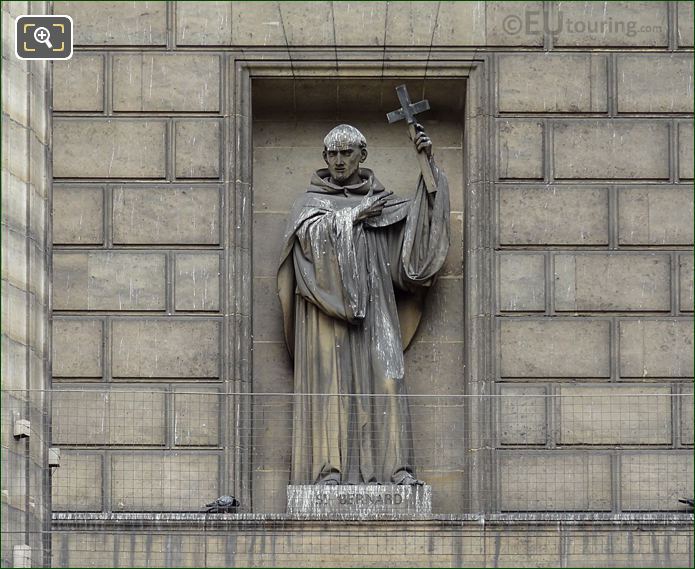
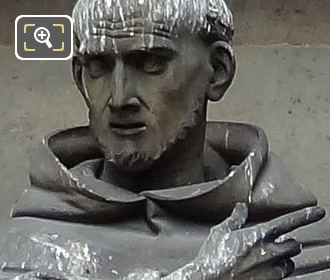

















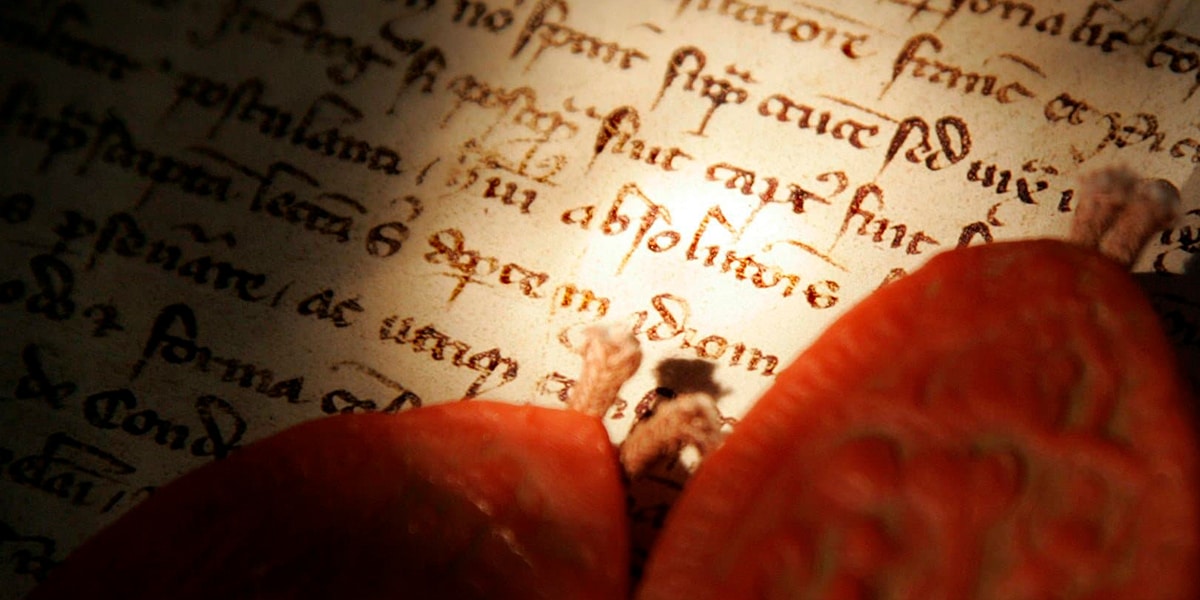
 A detail is shown on a replica in which Pope Clement V absolved the Knights Templar of heresy. (CNS photo/Alessandro Bianchi, Reuters)
A detail is shown on a replica in which Pope Clement V absolved the Knights Templar of heresy. (CNS photo/Alessandro Bianchi, Reuters)


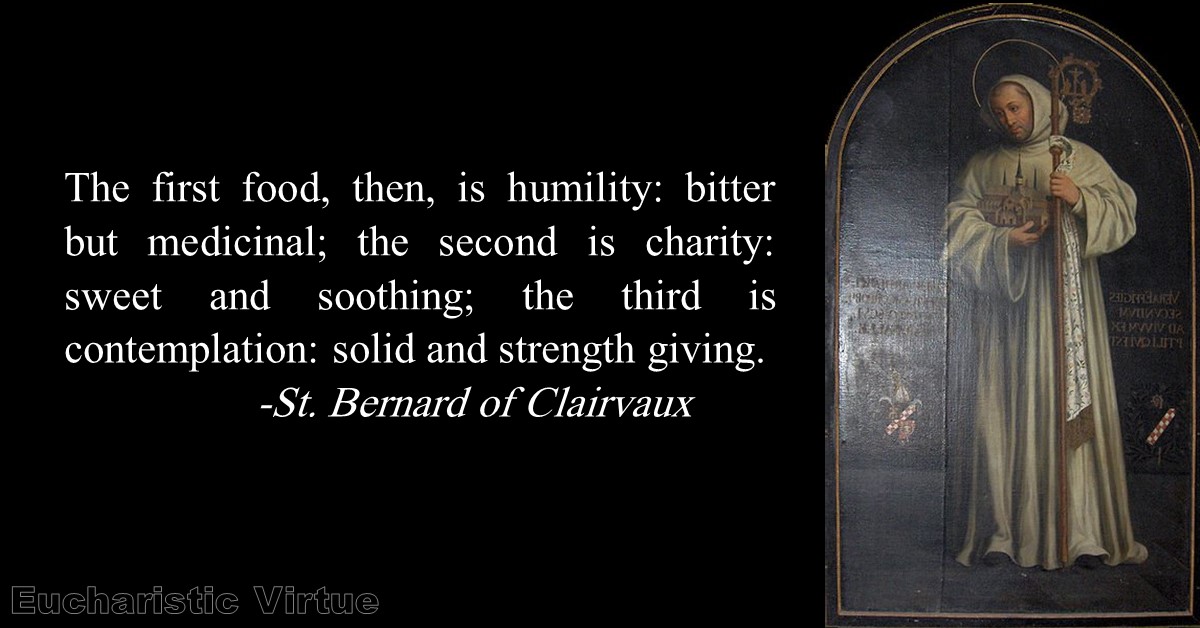
![Regreso Al Fururo III (Back To The Future III) [1990] –, 40% OFF](https://m.media-amazon.com/images/M/MV5BYzgzMDc2YjQtOWM1OS00ZjhhLWJiNjQtMzE3ZTY4MTZiY2ViXkEyXkFqcGdeQXVyNDQ0MTYzMDA@._V1_.jpg)
